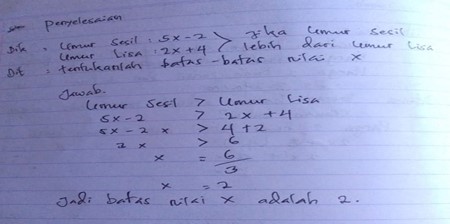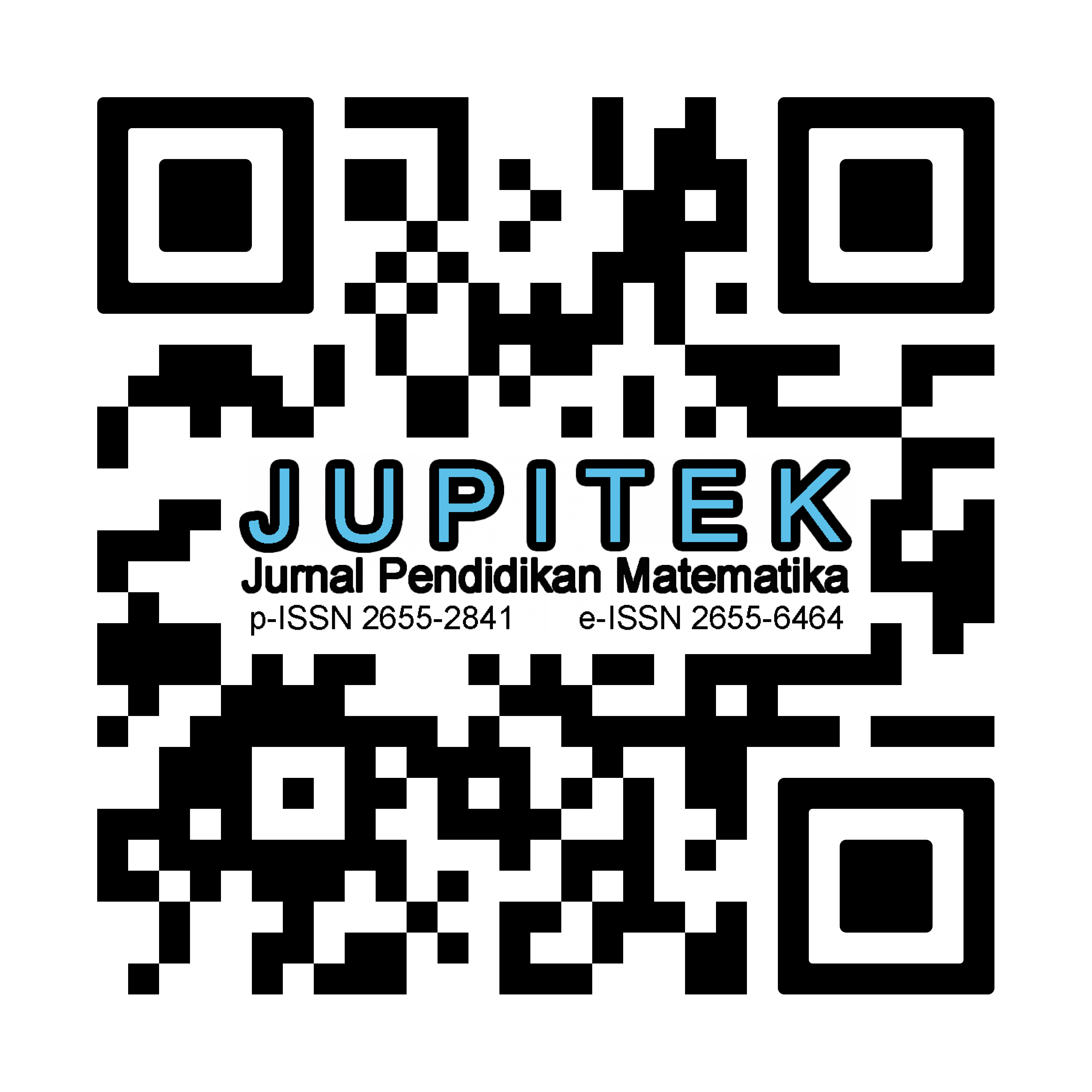ANALYSIS OF STUDENTS’ MATHEMATICAL CRITICAL THINKING ABILITY REVIEWED IN SOLVING MATHEMATICS PROBLEMS FROM GENDER DIFFERENCES
Abstract
This study aims to determine students' mathematical critical thinking skills in terms of gender differences. This research was conducted in March 2023 in class VII junior high school. The subjects of this study consisted of 6 people, including 3 male students and 3 female students. Based on the gender of each student, they are then grouped into 2 people with high ability categories, 2 people with medium ability categories, and 2 people with low ability categories. This type of research is a descriptive research. Data collection techniques were carried out using a written test consisting of 2 questions, by interview and documentation. Data analysis techniques consist of three stages, namely data is data reduction, data presentation, and drawing conclusions. Test the validity of the data using method triangulation techniques and data source triangulation. The results showed that students with high abilities could work on critical thinking test questions and covered all the indicators. In contrast, students with moderate abilities still needed to be able to work on mathematical critical thinking test questions well according to the criteria for critical mathematical thinking. Students with low abilities have yet to be able to do well on the mathematical critical thinking test according to the criteria of critical mathematical thinking. No significant difference exists between how to solve the test questions for male and female students in each ability category
Downloads
References
Alec Fisher. (2009). Berpikir Kritis: Sebuah Pengantar, Terj.dari Critical Thinking: An Introduction oleh Benyamin Hadinata. Jakarta: Erlangga.
Dewanti, S. S. (2018). Profil Berfikir Kritis Mahasiswa PGMI Dalam Memecahkan Masalah Matematika Dasar. Jurnal Matematika Dan Pembelajaran, 6(1).
Dila , S. C., Hidayat, W., & Rohaeti, E. E. (2018). Faktor Gender Dan Resiliensi Dalam Pencapaian Kemampuan Berpikir Kreatif Matematis Siswa SMA. Journal Of Medives, 2(1), 129-136.
Gunawan, I. (2014). Metode Penelitian Kualitatif. Jakarta: PT. Bumi Aksara.
Hidayanti, R., Alimuddin, & Syahri', A. A. (2020). Analisis Kemampuan Berpikir Kritis Dalam Memecahkan Masalah Matematika Ditinjau dari Perbedaan Gender Pada Siswa Kelas VIII SMP Negeri 2 Labakkang. Jurnal Matematika dan Pendidikan Matematika, 12(1), 294-300.
Hutabarat, M., Caswita, C., & Suharsono , S. (2019). Development Learning Design Based On Metacognitive Strategies Oriented To Critical Thingking Skill International. Journal Of Trends In Mathematics Education Research, 2(3), 120.
Mursari, C. (2020). Deskripsi Kemampuan Berpikir Kritis Matematis dan Kemandirian Belajar Siswa Ditinjau dari Gaya Belajar. Alpamath: Journal Of Mathematics Edecation, 5(2), 40.
Murtiyasa, B. (2019). students' thingking in solving geometric problems based on Rosdakarya PISA 1 evels. conference series, 1320, 1-6.
Nur, A., & Palobo, M. (2018). Profil Kemampuan Pemecahan Masalah Matematika Siswa Ditinjau Dari Perbedaan Gaya Kognitif dan Gender. Jurnal Matematika Kreatif-Inovatif, 9(2), 139-148.
Rizza, H. (2020). Analisis kemampuan berpikir kritis siswa dalam mengerjakan soal matematika. 2(1), 294-300.
Sugiyono. (2016). Metode Penelitian Kuantitatif, Kualitatif. Bandung : Alfabeta.
Widoyoko, & E, P. (2014). Penilaian Hasil Pembelajaran Di Sekolah. Yogyakarta: Pustaka Pelajar.
Yuberta, d. (2019). Pengaruh Math Anxiety Terhadap Kemampuan Pemahaman Konsep Matematis Siswa Berdasarkan Gender, Hal.82.
Yulianty, P., & Jufri, A. (2020). Perdebatan Empiris : Prinsip Metode Kualitatif dan Kuantitatif Untuk Penelitian Sosial Ekonomi. Jurnal Manajemen Dan Akuntansi, 15(2), 164-172.
Yurniwati. (2019). Pembelajaran Aritmatika Di Sekolah Dasar. Bandung: PT Remaja Rosdakarya.
Yusanto, Y. (2019). Ragam Pendekatan Penelitian Kualitatif. Journal Of Scientific Communication, 1(1), 1-13.

Copyright (c) 2023 Lana Sugiarti, Maximus Tamur, Emilianus Jehadus, Ricardus Jundu, Matilda Limur

This work is licensed under a Creative Commons Attribution-NonCommercial-ShareAlike 4.0 International License.
License and Copyright Agreement
By submitting a manuscript to Jurnal Pendidikan Matematika (JUPITEK), the author(s) certify and agree to the following terms:
- Originality and Authority: The submitting author is authorized by all co-authors to enter into this agreement. The manuscript describes original work that has not been published previously in a peer-reviewed journal, nor is it under consideration for publication elsewhere.
- Approval: Its publication has been approved by all author(s) and by the responsible authorities of the institutions where the work was carried out.
- Rights: The authors secure the right to reproduce any material that has already been published or copyrighted elsewhere.
- Licensing and Copyright: Authors retain the copyright to their work.
- License Grant: The authors grant Jurnal Pendidikan Matematika (JUPITEK) the right of first publication, with the work simultaneously licensed under the Creative Commons Attribution-NonCommercial-ShareAlike 4.0 International (CC BY-NC-SA 4.0).
- Self-Archiving: Authors are permitted and encouraged to deposit the published version of their article in institutional repositories, on their personal websites, and other academic platforms, with proper acknowledgment of its initial publication in Jurnal Pendidikan Matematika (JUPITEK).





.png)


